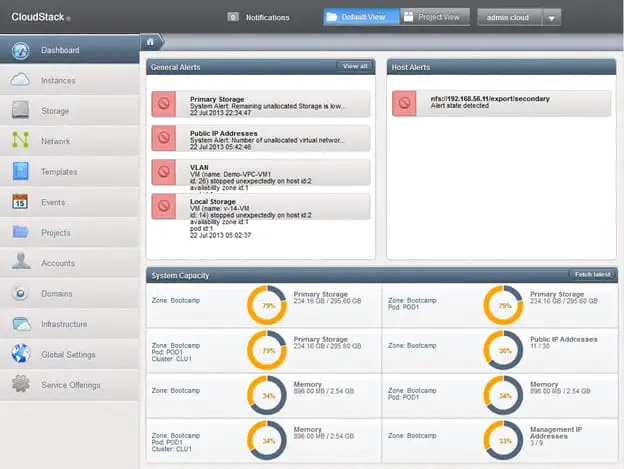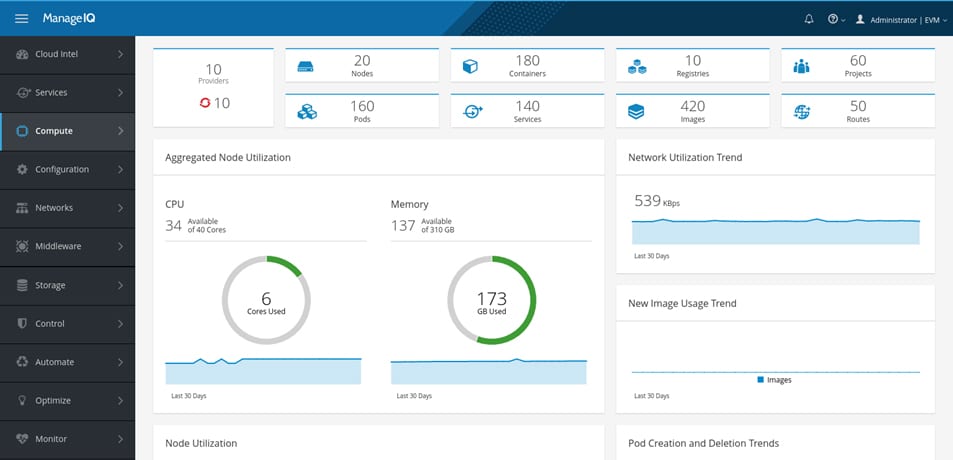While many organizations are moving to the cloud, there is something to be said for keeping at least some of your data and operations in your on-premise data center. Public cloud services, such as software-as-a-service (SaaS) computing environments and tools, are often affordable, scalable and highly available, but they can be limited in terms of compatibility with legacy applications or security compliance requirements.
On the other hand, few organizations have the necessary resources to maintain an on-premise infrastructure that is sufficient to house all their operations, especially if they handle dynamic workloads and need to be able to scale up and down with ease. Rather than give up entirely on the control and security afforded by a private cloud or data center, companies can combine these environments with public cloud services.
Hybrid cloud deployments offer the best of both worlds, but they can be complex to manage. For this reason, it is important to have a clear strategy for maintaining your hybrid environment and take advantage of management tools where you can.
This is a series of articles about hybrid cloud.
In this article:
- What is hybrid cloud?
- Essentials for hybrid cloud management
- Key capabilities of hybrid cloud management solutions
- Examples of hybrid cloud management tools
- Hybrid cloud management with Cloudian
This article is part of a series on Hybrid IT.
What Is Hybrid Cloud?
The hybrid cloud is one system that combines different cloud environments, typically private and public. A hybrid cloud is usually supported by software that helps manage and automate workloads, allowing them to operate seamlessly across on-premise and public cloud environments.
The concept of hybrid cloud is closely related to multi-cloud, which is the combination of two or more public clouds operated by different vendors. The terms are sometimes used interchangeably.
To learn more, read these articles on hybrid cloud architecture and multi-cloud management.
Essentials for Hybrid Cloud Management
Hybrid cloud management is complex. Beyond the technical aspects that are involved, it requires an in-depth understanding of security, governance, and end user requirements. Following are a few essential considerations for successful hybrid cloud management.
- Security and governance—with today’s DevSecOps mindset, you need to plan security for your hybrid cloud from the get go. Identify the security requirements of on-premise and cloud environments, and use tools like Identity and Access Management (IaM) to create homogenous security interfaces across environments. Monitor to ensure security requirements like encryption do not affect performance.
- Workload inventory—understand which workloads are expected to run in the hybrid cloud, and how they leverage on-premise and public cloud resources. Map out applications and understand their value to users, expected loads, data requirements, integrations, networking, and anything else that can impact availability or performance.
- Visibility across multiple cloud environments—relying on dashboards or interfaces for each separate cloud environment can quickly become messy. Use a tool or technology that can collect data from all on-premise and public cloud systems and display them on a single pane of glass. Seeing everything in one place, with a common system for metrics and reporting, will make management much easier.
- Service level agreements (SLA)—hybrid clouds are very sensitive to performance, so SLAs are an essential part of planning. Construct public-private interfaces, data transfer pipelines and latencies so that you can comfortably meet user performance expectations. Use public and private cloud resources wisely to achieve high availability that can meet uptime requirements.
Key Capabilities of Hybrid Cloud Management Solutions
Hybrid cloud management is a discipline, but it is almost always practiced with specialized cloud management tools. Here the common capabilities offered by Hybrid Cloud Management (HCM) solutions.
- Service aggregation—showing services and applications running on multiple cloud environments in one place and allowing you to manage them as a single unit.
- Cost management—allowing you to set flexible policies for cost across cloud solutions and maximize your ROI, for example by moving data to the cheapest applicable storage option.
- Self-service—allowing users to deploy, consume and terminate workloads without worrying about the underlying infrastructure.
- Release and deployment orchestration—supporting DevOps and CI/CD workflows by letting developers automate deployment of dev, test and production environments.
- Workload and cost analytics—providing rich, actionable data about what is running on the hybrid cloud and the costs incurred by cloud providers.
- Integrations and APIs—making it easy to integrate the hybrid cloud with existing enterprise systems and development tools, both in the cloud and on-premises.
- Platform as a Service (PaaS)—allowing users to consume databases and other common infrastructure elements as a managed service.
- Workload migration—providing automated, fast and low-risk options for moving workloads from private to public cloud environment and back.
Hybrid Cloud Management Tools
There is growing interest and adoption of cloud-native hybrid cloud management technology. Some tools use the approach of an open-source Infrastructure as a Service (IaaS) which comes pre-integrated with public cloud platforms. Other tools focus on managing your existing public and private cloud infrastructure. All the tools aim to provide abstraction and automation to help reduce the complexity and help you “tame” your hybrid cloud.
Following are four popular hybrid cloud management solutions.
OpenStack

Main features:
- Compute orchestration, network as a service, security and auditing
- Can be deployed as a private cloud or in the public cloud
- Integrates with popular enterprise technologies
- Integrates with all major public cloud providers
- Broad ecosystem of OpenStack projects and open source tools
Apache CloudStack

Main features:
- Compute orchestration
- Network as a service
- User and account management
- Security
- Wide hypervisor support including VMware, KVM and Citrix
- API compatible with Amazon EC2 and S3
Manage IQ

Main features:
- Hybrid IT management of legacy private clouds and public clouds
- Supports virtual machines, containers and public cloud infrastructure
- Self-service for end-users
- Provides visibility for workloads running across environments
- Powerful monitoring and performance optimization
Cloudify

Main features:
- Model-driven cloud management—define a desired state of application workloads and they are automatically deployed on the required clouds
- Powerful automation and abstraction of cloud resources
- Automates deployment and configuration across clouds
- Lets you define SLA policies and ensures workloads comply with service levels
Hybrid Cloud Management with Cloudian
Hybrid infrastructures can be complex to manage without the help of a management solution. Cloudian HyperStore is a scalable, on-premise object storage platform with a 100% S3 native API. HyperStore lets you easily manage your data in public and private storage and can be integrated with a variety of cloud and third-party services, including migration services.
Cloudian you to easily manage stored data based on bucket-level policies, including backup scheduling and lifecycle, as well as automate erasure coding and replication. With HyperStore, you can automatically verify and encrypt data, and you can facilitate search and analytics by using custom metadata tags.
HyperStore will help you store your data securely and efficiently, so you can focus on your actual work and get the most out of your hybrid cloud.


